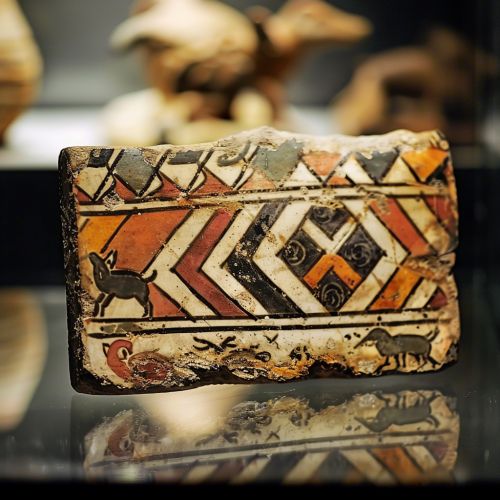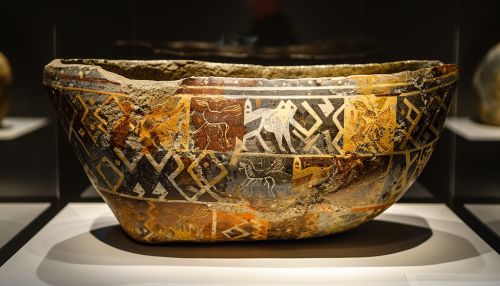Celtic Art
Origins and Influences
Celtic art is a term used to describe a wide range of artistic styles associated with the Celtic cultures of Iron Age and Medieval Europe. The earliest examples of Celtic art can be traced back to the Hallstatt culture, which flourished in central Europe from the 8th to 6th centuries BC. This early period of Celtic art was heavily influenced by the art of the Scythian and the Etruscan cultures, with a strong emphasis on geometric patterns and animal motifs.


Hallstatt Art
Hallstatt art is characterized by its intricate geometric patterns, often featuring spirals, circles, and other shapes. These patterns were typically created using a technique known as repoussé, in which the design is hammered into the reverse side of a thin sheet of metal. This period of Celtic art also saw the introduction of the "master of animals" motif, a common theme in ancient Near Eastern and Mediterranean art, where a human figure is shown in control of animals.
La Tène Art
The La Tène style, named after the archaeological site of La Tène in Switzerland, emerged around 450 BC and marked a significant evolution in Celtic art. The geometric patterns of the Hallstatt period were replaced by more complex and intricate designs, often incorporating stylized representations of animals, birds, and humans. The La Tène style is also notable for its emphasis on symmetry and balance, with designs often featuring mirrored or repeating elements.
Insular Art
With the fall of the Western Roman Empire in the 5th century AD, the Celtic cultures of the British Isles began to develop their own distinctive artistic style, known as Insular art. This style is characterized by its intricate interlacing patterns, often used to decorate religious manuscripts, metalwork, and stone carvings. The most famous example of Insular art is the Book of Kells, a 9th-century illuminated manuscript decorated with elaborate designs and illustrations.
Celtic Revival Art
The Celtic Revival of the 19th and 20th centuries saw a renewed interest in Celtic art and culture. Artists and craftsmen began to incorporate traditional Celtic motifs and designs into their work, often combining them with contemporary artistic styles. This period also saw the creation of the Celtic cross, a symbol that combines a traditional Christian cross with a circular ring, often decorated with interlacing patterns.
Characteristics of Celtic Art
Celtic art is notable for its emphasis on intricate, complex designs, often featuring interlacing patterns and stylized representations of animals and humans. These designs are often symmetrical and balanced, with a strong emphasis on geometric shapes and patterns. Celtic art is also characterized by its use of vibrant colors, particularly in illuminated manuscripts and stained glass.
Influence on Other Artistic Styles
Celtic art has had a significant influence on a number of other artistic styles and movements. The intricate interlacing patterns of Insular art were a major influence on the development of the Art Nouveau movement in the late 19th and early 20th centuries. Similarly, the geometric patterns and stylized animal motifs of Hallstatt and La Tène art have been incorporated into a wide range of modern and contemporary artistic styles.
